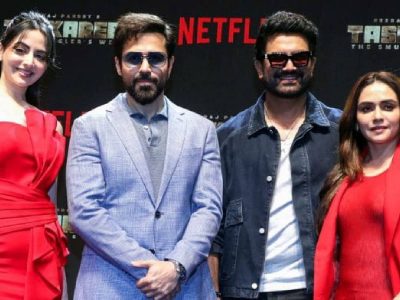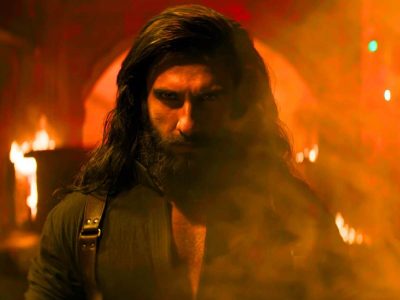The concept of Mile Sur worked when born, failed when reborn. It can’t strike strike a chord with a generation which sees celebrities every day on the small screen
Three decades separate two generations in India. One grew up on musical homilies on national integration on Doordarshan. The other trolls or fawns a cross-section of celebrities on social media. The intervening period is remarkable for various points of departure that everyday India witnessed in its relationship with its celebrities, though a few elements of continuity haven’t disappeared either.
The generation gap could have been bridged by the evocative musical medley that was ‘Mile sur mera tumhara’. It was first aired in 1988 and soon became one of the rare public message anthems which caught the country’s imagination. For a variety of reasons. It managed to escape the ennui that comes with clichéd evocation of India’s pluralism in public broadcasting sermons.
Seen as a concept prodded by the then prime minister Rajiv Gandhi himself and conceived-directed by Suresh Mallik and Kailash Surendranath for Ogilvy & Mather production, Mile Sur also saw the lyrical side of Piyush Pandey, who was then an account manager working for the advertising firm while Ashok Patki and Louis Banks set it to music.
So what accounted for its appeal 30 years earlier and why has its sequel aired eight years ago (2010) failed to make any impression?
Among other things, it can also be seen in as the gradual unravelling of celebrity mystique and its altered and multiple ways of reception in the country. Along with changing contours of celebrity visibility on television, the original and the sequel are also signs of the changing nature of nationalist imageries in public imagination.
If one looks back at how it was viewed back in 1988, say in a middle class Indian home, Mile Sur goes beyond an average nostalgic trip. It unwittingly offers a cathartic moment, a moment to confront some blurred imageries on the fringes of our visual memory. The nostalgia gives way to poignant hindsight.
We do remember images littered on our memory lane as signposts which Doordarshan posted in its nationalistic overdrive, revelling in its monopoly as the prized possession of middle-class homes. To give the devil his due, it gave a generation some shared visual experiences to relate to. “It is the Calcutta Metro (Kolkata was still a misnomer in those politically incorrect times)”, informed a family elder to children, as a smiling Arun Lal and Mrinal Sen were shown alighting from a swanky rail coach.
The Metro rail brings up a point that one can’t miss telling here before usual celebrities are talked about. For children growing up in rural India and small towns, the Metro was also a “celebrity” of a different kind. The collective imagination of an altered urban landscape with state-of art transport wasn’t what one actually was experiencing 20 years later, the time when Surendranath attempted to refresh memories through a sequel.
The debris of imagined structures have to be tucked away somewhere as the children of the eighties board the Metro of their times. A case in point is Delhi Metro — one of the many shared experiences that public space has to offer in urban India. The problem with the Delhi Metro is that it has acquired the bathos of maturity without seeing the animate innocence of childhood. The monstrosity gives you a feeling of insignificance, part-anomie and part-alienation.
For the celebrity-starved viewers of the small screen, Doordarshan sprinkled Mile Sur with the popular icons of the day — film stars from all parts of India including Bollywood stars, singers and instrumentalists of light as well as classical music, sports icons, etc. In a country with just one TV channel, which had aversion to providing amusement, the promise of seeing film stars and sports icons under one umbrella was enough to hook a generation to it.
In late eighties, it ensured that its homilies about India’s mosaic were sprinkled with rare dose of glamour and iconography. That was obviously to engage viewers who had been hitherto repelled by the pedantic narratives on nationalist identity which Doordarshan somehow relished. In face of the battle-hardened nation state’s brush with insurgencies in Punjab and Assam, the public broadcaster never missed an opportunity to give a crash course on national integration.
There were few who did not then enjoy a look at Amitabh Bachachan, Mithun, Kamal Haasan and Hema Malinin joining a chorus with Sunil Gavasakar, Prakash Padukone and PT Usha while the vocal sublimity of Pandit Bhimsen Joshi and M Balamuralikrishna set the tone. In times when celebrity sighting on television wasn’t a 24-hour affair, Mile Sur was very generous with its assortment of faces people wanted to see on television.
That perhaps also explains why it failed in its 2010 sequel despite being overpopulated by celebrities. In the intervening two decades, liberalised airwaves witnessed proliferation of private satellite channels and by extension. multiple platforms for accessing film stars and sports icons.
To add to that very significantly, the advent of internet and its interactive social networking avatar in form of social media thinned out the mystique around celebrities. Celebrity darshan on visual media platforms became anachronistic as the stars became as ubiquitous as cola bottles.
By 2010, Mile Sur ran into a pattern of video-viewership which had developed a visual fatigue for contemporary icons. Something it didn’t factor in while seeking a fresh visual mandate in an age of image overload, a sideshow of information highways of the 21st century.
“ An era is said to have ended when its basic illusions are exhausted,” observed American playwright Arthur Miller. Three decades later, it’s clear that Mile Sur can be tucked in public imagination as a nostalgic piece of musical sublimity, never revived with the fatigue that our pixelated times entail.





